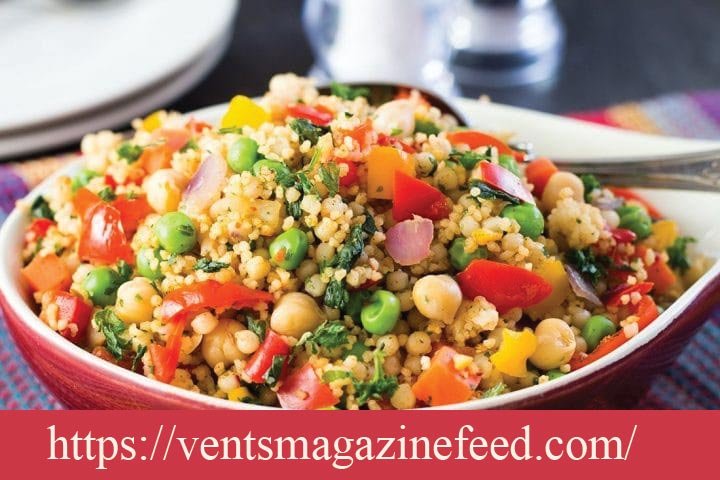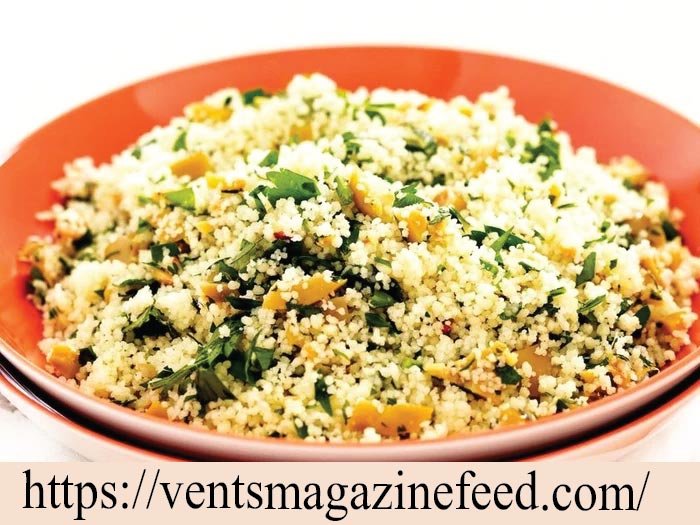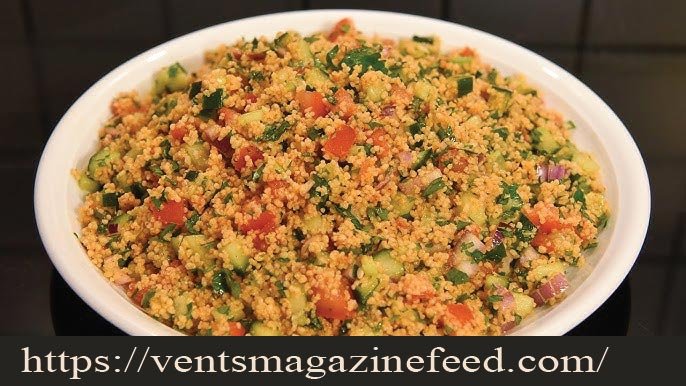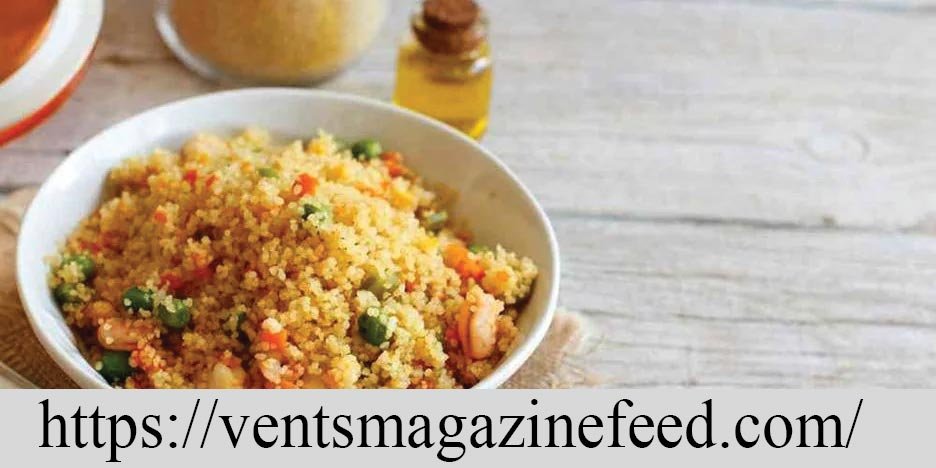Cuşcuş, a staple of North African delicacies, has ended up being a popular part of kitchens around the world. Cuşcuş (pronounced “koos-koos”), known for its versatility, delicate texture and rich history, offers more than just a side dish; it gives you a combination of flavor and nutrients that could overhaul any meal. In this complete guide, we can discover several blessings, coaching strategies and culinary uses of cuşcuş, which will give you all the understanding you need to include this wonderful grain in your diet.
Cuşcuş Unveiled: The Essential Guide to This Ancient Grain
What is Cuşcuş?
Cuşcuş is a granulated wheat product made from steamed semolina, which is a type of coarse-ground wheat. Its origins lie in the Berber tradition of North Africa, in which it has been a staple for hundreds of years. The process of creating cuşcuş involves rolling semolina with a little water to form small granules, which are then steamed until they reach a light, fluffy texture. This traditional method imparts a unique texture and flavor that has earned cuşcuş a place of honor in both historical and modern cuisine.
The rich history of Cuşcuş
Cuşcuş’s record is deeply intertwined with North African culinary traditions. Traditionally, it is prepared in a joint presentation and is enjoyed within the circle of family meetings and festive activities. Its preparation and consumption reflect the cultural heritage of the Berber people, who have passed down recipes and techniques for generations. Today, cuşcuş continues to be celebrated for its cultural significance and potential to bring people together over a shared meal.

Nutritional power: Why Cuşcuş is a healthier choice
Nutritional breakdown of Cuşcuş
Cuşcuş is not always just a delicious faceted dish; it’s also a diet powerhouse. A moderate serving (about one cup) of cooked cuşcuş provides:
- Calories: 176
- Protein: 6 grams
- Fiber: 2 grams
- Carbohydrates: 36 grams
- Folate: 20% Daily Value (DV)
- Iron: nine% DV
- Magnesium: 10% DV
From promoting energy degrees to selling digestive wellbeing, these vitamins play a vital role in maintaining typical fitness.
Health benefits of including Cuşcuş in your diet
- Strengthens the health of the digestive tract: The fiber in cuşcuş makes it easier to maintain a healthy digestive system by promoting normal bowel movement and stopping constipation. Additionally, fiber supports a balanced gut microbiome, which is vital for basic health.
- Provides sustained energy: The complex carbohydrates in cuşcuş offer a steady supply of energy, making it a great craving for staying power to keep up at some point in the day. Unlike simple carbohydrates, which could cause spikes in blood sugar, cuşcuş provides a slower onset of energy.
- Supports heart health: Cuşcuş contains folate and iron, vitamins that are beneficial for cardiovascular health. Folate helps in the production of pink blood cells, while iron helps in the delivery of oxygen and allows you to avoid anemia. In addition, the fiber-containing material in cuşcus can help lower cholesterol and promote heart health.
Mastering the art of preparing Cuşcuş
Traditional methods of preparation
The traditional education of cuşcuş involves a multi-step process that emphasizes its unique texture and taste. Here’s how it ended:
- Rolling semolina: Start by mixing semolina with a small amount of water to make small granules. This step is necessary to get the right texture.
- Steaming: The granules are then steamed in a unique vessel called a kiskas. The steaming method makes it easier for the grains to swell and come out light and fluffy.
- Fluffing: After steaming, fluff the cuş cuş with a fork to break up the grains. This step ensures that the cuş cuş has a soft, ethereal texture.
Traditional cuş cuş coaching requires persistence and attention to detail, but the end result is a dish that is both taste and texture pleasing.
Modern preparation techniques
For people with limited time, instant cuş cuş offers a convenient opportunity. Instant cuş cuş is pre-cooked and dried with a quick training in mind. Just add boiling water, let it boil for a few minutes and fluff with a fork. Although this method is faster, it can bring hardly any texture compared to standard cuşcuşem.

Cuşcuş: A versatile culinary ingredient
classic dishes with Cuşcuş
The versatility of Cuş cuş excels in a number of conventional dishes, including:
- Tagine: A slow-cooked stew, often prepared with meat, vegetables and fragrant spices, served on a cuş cuş mattress. The light texture of cuş cuş highlights the healthy and tasty tagine.
- Couscous Salad: A refreshing salad made with couscous, sparkling vegetables, herbs and a spicy dressing. This dish is perfect for a light lunch or a barbecue restaurant.
Innovative recipes for cuşcuş
Cuş cuş can also be incorporated into contemporary recipes and thus give a completely unique twist to food dating. Here are some creative ideas:
- Couscous Grain Bowl: Combine couscous with roasted vegetables, protein stock (along with grilled chicken or tofu) and a tasty dressing. This balanced meal is nutritious and enjoyable.
- Cuş cuş-stuffed peppers: Use cuş cuş as a filling for peppers in combination with vegetables, herbs and spices. Roast until the peppers are soft for a delicious and healthy meal.
- Couscous Breakfast Porridge: Turn couscous straight into a breakfast dish by cooking it with or without milk and adding fruit, nuts and a touch of honey. This nutritious twist on breakfast porridge is a great way to start the day.
Health aspects and dietary adjustments
Cuşcuş for special diets
Cuş cuş can be adapted to various health conditions, making it a versatile choice for many:
- Gluten-free alternatives: Traditional cuş cuş is made from wheat, so people with gluten sensitivities must look for gluten-free alternatives such as quinoa or millet.
- Vegetarian and vegan options: Cuş cuş is clearly vegetarian and can easily be included in a vegan meal. Use vegetable stock or water for cooking and pair it with plant-based protein for a whole meal.
- Low-sodium choices: For those watching their sodium intake, opt for homemade or low-sodium stock when making couscous and be mindful of adding salt to recipes.
Balancing Cuşcuş in a healthy diet
While cuş cuş is a nutritious desire, it is essential to stabilize it with different food companies. Combine cuş cuş with several vegetables, lean proteins and healthy fats to create a complete meal that provides a complete spectrum of nutrients.
Culinary tips and tricks for the perfect cuşcuş
Improvement of taste and texture
To increase your cuş cuş, remember the following tips:
- Use stock instead of water: For flavor, cook cuş cus in vegetable or chicken stock instead of plain water. This will give the grains a richer taste.
- Add fresh herbs and spices: Add fresh herbs such as parsley, cilantro, or mint, and spices that include cumin or coriander to enhance the flavor profile of your couscous.
- Incorporate nuts and dried fruit: For added texture and awesomeness, mix in nuts (including almonds or pine nuts) and dried fruit (like raisins or apricots).
Storage and heating tips
- Storing cuş cuş: Store cooked cuş cuş in an airtight container in the refrigerator for up to 4 days. In the case of a longer garage, freeze the cuş cuş in a freezer bag for up to three months.
- Heating the couscous: Heat the couscous in the microwave or on the hob. Add a dash of water or stock to keep it from drying out and fluff with a fork before serving.

Cuşcuş Global Challenge
Cuşcuş Beyond North Africa
Cuş cuş transcended its North African origin to end up a global and famous global element. Thanks to its versatility and simplicity of management, it is the basis of various international cuisines, from Mediterranean to fusion food. Chefs and home cooks have come to love cuş cuş for its potential to complement a vast array of flavors and substances.
Embracing Cuşcuş in your kitchen
Incorporating cuş cuş into your cooking repertoire can open up a world of culinary opportunities. Whether you are preparing traditional North African dishes or experimenting with contemporary recipes, cuş cuş offers a completely unique texture and flavor that can enhance any dish. Its dietary benefits likewise solidify its region as a valued addition to a balanced weight loss plan.
More: Reddit
Conclusion: Cuşcuş – a culinary gem worth exploring
Cuşcuş is more than just a side dish; it is far from a flavorful and nutritious grain with deep cultural roots and international appeal. From traditional training methods to innovative recipes, cuş cuş offers a versatile and healthy addition to any meal. By understanding its history, benefits, and culinary uses, you can fully appreciate the value of cuş cuş and incorporate it into your diet in delicious and innovative ways. Embrace the appeal of cus cus and expand your culinary adventures with this perfect grain.










